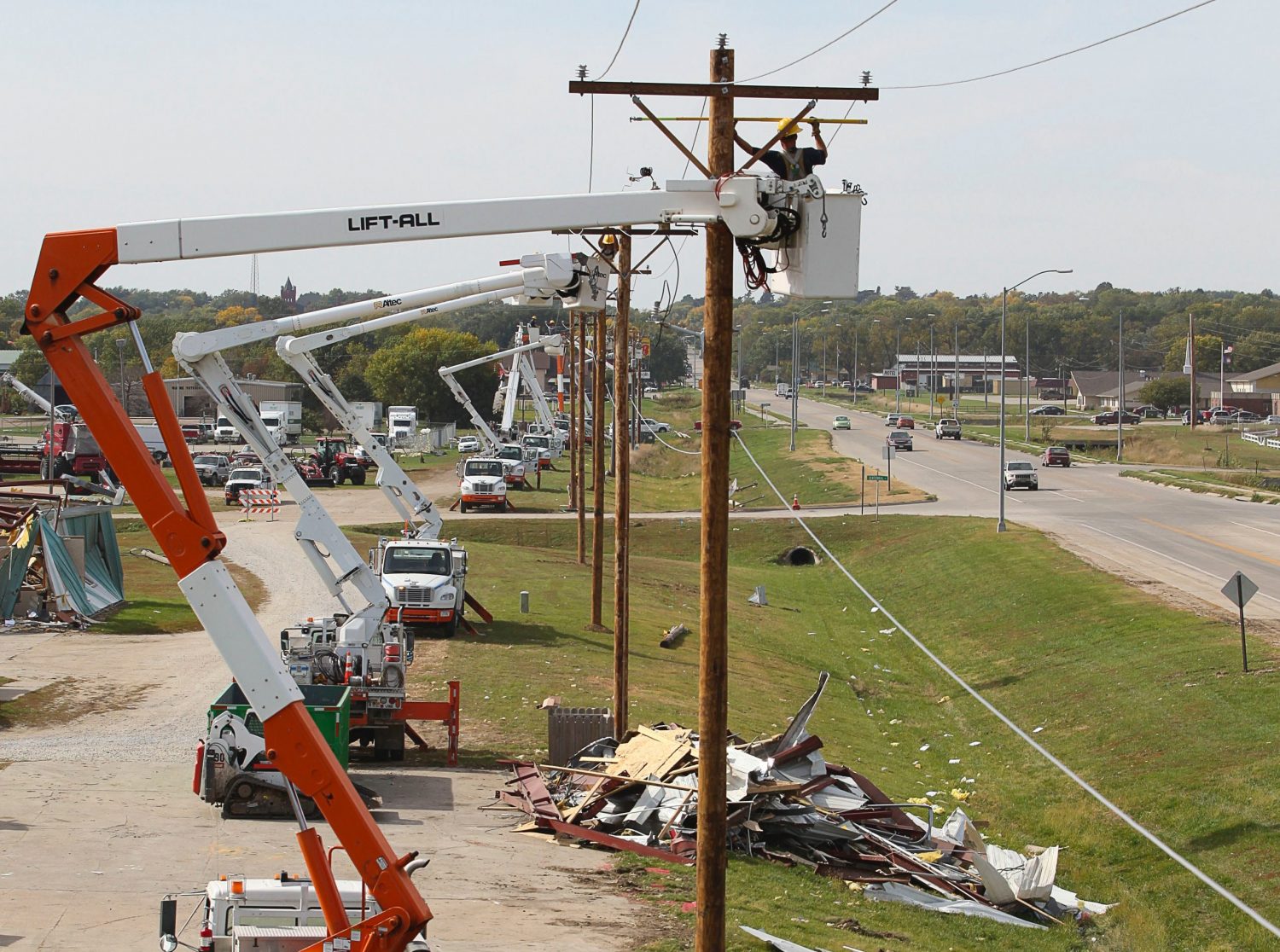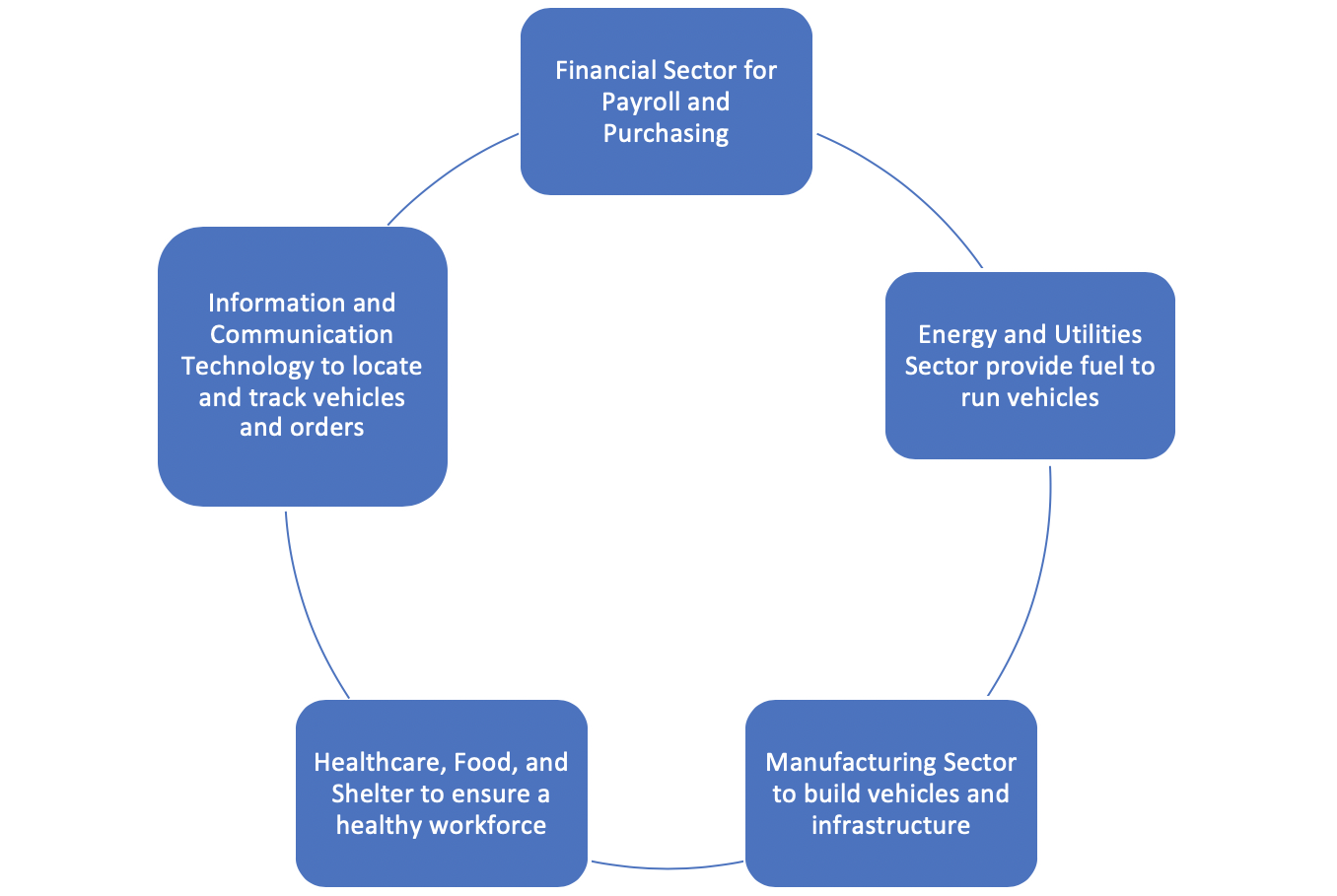
Critical Infrastructure and Systems
Critical Infrastructure and Systems (CIS) are the structures people rely on to perform their everyday tasks. They are what keep people, goods and information moving around the world while also keeping people safe and healthy.
Overview
Critical Infrastructure and Systems (CIS) are the structures people rely on to perform their everyday tasks. They are what keep people, goods and information moving around the world while also keeping people safe and healthy.
During disasters, the continued functioning of all of the Critical Infrastructure and Systems are key to efficient and effective mitigation, response and recovery. When one of the CIS is disrupted, the people who are experiencing the disaster are more likely to have worse outcomes because of the disaster. While each country will have a different set of CIS specific to their jurisdiction, in general CIS are made up of the following sectors:
- Health care – This includes not only hospitals and clinics, but also pharmaceuticals, private practitioners, public health, mental health, community-based care and pre-hospital care (first responders).
- Food – This sector is comprised of the production, distribution and preparation of food – including nutrition, agriculture and farming.
- Finance – Banks are the most obvious part of this sector, but this also includes things such as payment processing, private lenders and currency.
- Water, Sanitation and Hygiene (WASH) – Water is essential for health and safety, but just as important is the disposal and cleaning of contaminated water and the ability for people to keep themselves clean.
- Information and Communication Technology – The internet, phone lines, data services, cell services and lesser-known technologies such as Industrial Control Systems form the backbone of many systems around the world.
- Safety – Information and Intelligence gathering, law enforcement, the military and fire protection services are all necessary for the safety of people, no matter where they are.
- Energy and Utilities – Along with the electrical system, this sector also includes gasoline and diesel, as well as natural gas. Water is often a public or private utility as well.
- Manufacturing – Every non-natural physical item that exists has to be manufactured in some way, shape or form. This sector includes everything to do with the design and production of physical objects from paper to vehicles.
- Government – Stable government services are necessary to ensure appropriate oversight and regulation of a country’s activities and to negotiate with other countries.
- Transportation – Not only the act of moving people and goods from one point to another, but also the infrastructure necessary for the free movement of people and goods. This includes all modes of transportation including public and private vehicles, trains, planes, boats, buses etc. It also includes the physical infrastructure such as roads, bridges, dams, levees and railroads.
- Shelter – Shelter is key to the short- and long-term safety of people, and this sector includes both Emergency and Interim Shelter as well as long-term housing.
- Education – While education is not often included as critical infrastructure, the lack of education will cause a country or region to lag far behind its neighbors as they advance. Returning students to school is an important part of regaining normalcy post-disaster.
Key Facts
- Critical Infrastructure and Systems (CIS) are key to Disaster Recovery. CIS are key to ensuring people receive the help they need during and immediately after a disaster. Support for any one of these sectors will help speed recovery in every case.
- Pre-Disaster grants in these sectors can make a significant difference. Improving the resiliency of CIS before a disaster happens can help speed up recovery after a disaster by reducing the damage from the event or making it easier to repair and/or replace damaged areas of a CIS sector.
- CIS are all interdependent. Each of the CIS sectors relies on every other CIS sector in order to remain operational, as shown in the simplified diagram of the transportation sector interdependencies. If one CIS sector fails, the others are at an increased risk of failing as well.

- CIS ownership is both public and private. Every country around the world has a combination of both public and private ownership of CIS. The electrical system may be publicly owned, but the manufacturing sector that uses the electrical system is often privately owned. The road system is usually publicly owned, but the vehicles that use the roads are usually privately owned. This mix of public and private ownership can make disaster mitigation, relief and recovery a challenge to fund.
- Rural and tribal communities can benefit the most from effective CIS grants. Rural and tribal communities often struggle financially to build critical infrastructure and will often choose less expensive and less resilient methods of building as a result. Well-structured grants to encourage preparedness and resilience building, as well as grants that encourage the “Build Back Better” philosophy during recovery can make an outsized impact in these communities when compared with larger communities.
How to Help
Funding in any area of critical infrastructure and systems will make a significant impact on the resiliency of people toward disasters. Donors can help by using some of the following principles:
- Fund projects that are publicly-, community- or cooperatively-owned. Critical infrastructure and systems benefit everyone in a community or jurisdiction. Projects that are owned in some way by the people who benefit make them much more accessible and collaborative than privately-owned infrastructure or systems.
- Prioritize grants that enhance infrastructure and systems that support vulnerable and marginalized people. People who are already vulnerable and marginalized are at increased risk when critical infrastructure and systems are damaged or fail. Increasing the resiliency and reducing the restoration time for critical infrastructure and systems means that important resources can be focused on the needs of vulnerable and marginalized people.
- Create unique opportunities to enhance the resiliency of critical infrastructure and systems. The wide variety of sectors contained within the umbrella of critical infrastructure and systems allows for unique loans and funding arrangements. These may include things like low- or no-cost loans for generators or water filtration systems, supporting local food production by funding community gardens or supporting innovative public transit opportunities.
- Participate in local, regional and national critical infrastructure networks. Donors can play an important role in helping to fill gaps in critical infrastructure and systems through their ability to fund projects that may not qualify for other funding. Participating in these networks will help donors understand the needs and locate opportunities to invest in critical infrastructure and systems.
What Funders Are Doing
- The National Community Lottery Fund (formerly the Big Lottery Fund) provided WaterAid with $597,321 in 2012 to respond to the need for climate resilient access to water, sanitation and hygiene (WASH) services in the Koyra Upazila of Khulna district in Bangladesh. The proposed interventions address three key issues that have exacerbated the impacts of cyclone flooding events in Bangladesh that remain barriers to improving peoples’ long-term welfare.
- In 2018, the NoVo Foundation donated $500,000 to BRAC USA to provide shelter, along with other necessary supports, to Rohingya refugees in Bangladesh with a focus on the needs of adolescent girls.
- The Robert Wood Johnson Foundation gave $150,000 in 2017 to the National Academy of Sciences to provide support to the Forum on Medical and Public Health Preparedness for Disasters and Emergencies.
- In 2017, the Unitarian Universalist Service Committee gave Mouvman Peyizan Papay in Haiti $50,000 to continue construction of a school in the locality of Colladere to serve the victims of the earthquake who live in the Eco-Villages, as well as children from other localities, ultimately helping more kids living in the Eco Village have access to better quality education.
- Also in 2017, the Global Greengrants Fund, Inc. provided $4,000 each to the Tariwa Taro Association and Wan Smol Bag, both in Vanuatu, for unique critical infrastructure projects. Tariwa Taro Assocation used the funds to build food security through education of traditional crop management methods, training new farmers, the creation of a community nursery and the introduction of disease resistant taro seedlings. Wan Smol Bag created a composting public toilet that could be used by people who were experiencing homelessness or did not have regular access to WASH systems. The waste from this toilet is used in local gardens as compost, which also results in increased food security.
Learn More
- The US Department of Homeland Security has many resources related to Critical Infrastructure and Systems.
- There are many cross-border agreements in North America to cooperate on Critical Infrastructure and Systems during emergencies and disasters.
- United Nations University: Five Things You Need to Know About Critical Infrastructures
- EU Science Hub: Critical Infrastructure Protection
- BBC News: Cyber-Attacks ‘Damage” National Infrastructure
We welcome the republication of our content. Please credit the Center for Disaster Philanthropy.